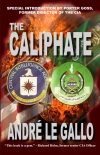The Red Cell by André Gallo (best books to read non fiction .TXT) 📗

- Author: André Gallo
Book online «The Red Cell by André Gallo (best books to read non fiction .TXT) 📗». Author André Gallo
The physician who gave him the bad news had tears in his eyes when he said, “Life expectation is two to five years. There is no cure.” But, when his only counsel was to tell Marshall to go home and think about his situation for a month before coming back, Marshall replied, “Just take care of my body if you can. I’ll take care of my mind.” In the belief that sitting on his hands was never a solution, he found another doctor who was more aggressive.
Gone were the days when men twenty-five years younger would approach him at the gym, asking his age, amazed he could handle heavier weights than they could. Or when he could jack-rabbit around the tennis court, returning serves and covering the sides and baseline with equal agility and quickness.
“Thanks,” Marshall replied. “And who is going to be our audience?” Before she could answer, he quickly added, “Congratulations by the way. I was worried some politician might get the job.”
LaFont was only the third director to have been promoted up from the ranks after Dulles and Helms. She had proven her mastery of clandestine operations, first against Greece’s “17 November” terrorists, later directing Kella and his son Steve from headquarters in an effort that had saved thousands of lives in the Middle East, and then, as head of the National Clandestine Service, overseeing the counter-cyber operation that had saved America’s economic infrastructure from the Ayatollah’s anger.
“The usual suspects,” she smiled. In her forties, she had the figure of a younger woman, and she still attracted glances, admiring from the men and envious from the ladies. Ever since Congress had downgraded the CIA, when it created the Office of the Director of National Intelligence, LaFont had taken down the seals of the other fifteen intelligence agencies from the walls of her conference room and replaced them with four large, flat-screens monitors, which could show overhead imagery from satellites or drones, or display video conferencing with the White House or any government agency capable of encrypting its signal.
Several uniforms, stars and decorations glittering, greeted him, as he and LaFont entered the room. As they did, Marshall’s experienced gut sorted them out. General Jack Hopkins, Joint Special Operations Command, was not yet a friend and wouldn’t be unless his special operators were part of whatever the CIA was planning. Tom Nortsen, chief of the Clandestine Service’s Near East division, was probably a friend if he could be in charge. The sight of his son Steve, representing the White House Intelligence Staff, brought a relieved smile to his face.
He had learned about the attempt on Steve’s life a few minutes after it happened, and before it generated headlines both in the nation’s capital and across the country. Then, when Steve called his father from a secure phone, they discussed the implications of the act. General Yosemani, the Quds Force commander, they agreed, must be feeling extremely confident in his organization’s defensive capabilities to have ordered such a brazen hit on American soil. If he was trying to bring attention to himself, he had succeeded. And Marshall had begun thinking about retaliation.
“Marshall, this is Dan Cleave,” LaFont said, as a civilian in an unobtrusive gray suit stepped up to him. “He’s Deputy of the TSG.”
Marshall knew the Technical Survey Group had been established as a hybrid between the National Clandestine Service and the National Security Agency. While the NSA intercepted communications from U.S. territory, the TSG did the same thing overseas, sometimes breaking into foreign installations to do so. “Dan is on loan from the NCS,” she added.
“Yes, we take turns,” Cleave said. “One year the TSG chief is from NSA and the next he’s from the CIA.”
“Meaning next year you’ll take over?” Marshall asked. Cleave’s fine, almost transparent blond hair, combed straight back, contrasted with his thick, black-rimmed glasses. With elbow patches and a pipe he could have been mistaken for a professor.
“That’s right,” he said. “That is, if there’s any money in the budget by the time I take over. We live on hand-outs from our two sponsors.
“Let’s get started, shall we?” LaFont said. Standing at the head of the table, she glanced at the mostly military audience that filled less than half of the seats. “As some of you know, we’re meeting at the behest of President Tremaine. Basically, he wants another option to the three-week campaign and the four hundred airstrikes the DOD secretary proposed last week to stop Iran’s nuclear program.”
She paused an instant and took stock of the knowing glances around the table, some annoyed and others pleased, all glancing at Steve, the White House representative, who kept a poker face.
“Since our Red Cell unit has been working on the problem, I would like Marshall to share his thoughts of what a Plan B might look like.”
Marshall, sitting on LaFont’s right, stood for an instant before sitting back down. “I think you can all hear me if I sit,” he said, as he scanned the faces at the table. “First, you may not know about our Red Cell, so let me give you the executive summary. After Israel’s intelligence failed to predict the Egyptian attack across the canal in 1973, their military intelligence created a “Devil’s Advocate” group. Its job was to challenge the consensus and, based on the same intelligence as everyone else, come up with other plausible conclusions and recommendations. We could have used Red Cell thinking on the way to Pearl Harbor and 9/11. Challenging the establishment, of course, does not make us very popular.” He saw a couple of understanding smiles and continued.
“We’re approaching the problem of





Comments (0)